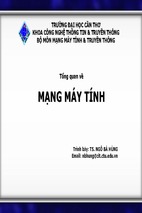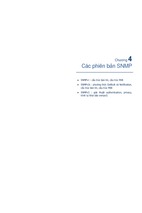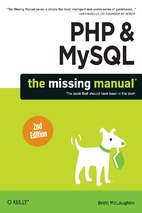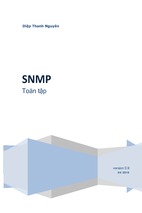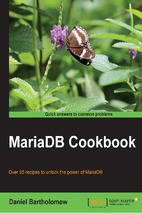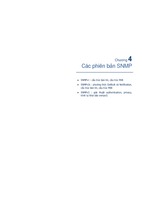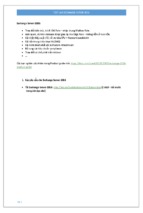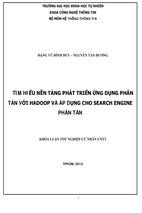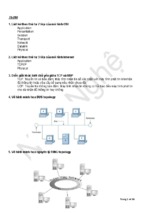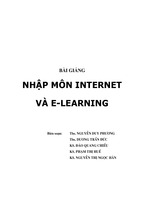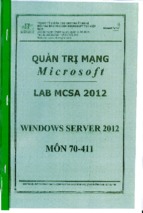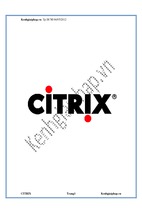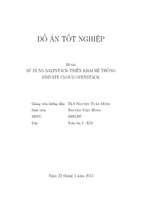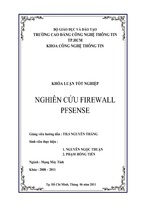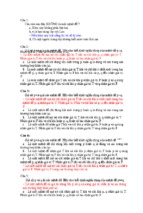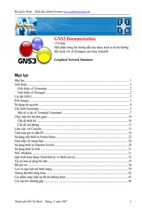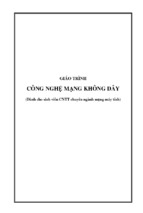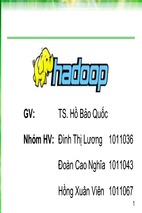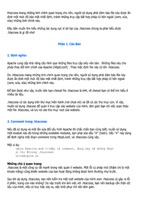CCNA ICND2
Official Exam Certification Guide
Second Edition
Wendell Odom, CCIE No. 1624
Cisco Press
800 East 96th Street
Indianapolis, IN 46240 USA
ii
CCNA ICND2 Official Exam Certification Guide, Second Edition
Wendell Odom
Copyright © 2008 Cisco Systems, Inc.
Published by:
Cisco Press
800 East 96th Street
Indianapolis, IN 46240 USA
All rights reserved. No part of this book may be reproduced or transmitted in any form or by any means, electronic or
mechanical, including photocopying, recording, or by any information storage and retrieval system, without written
permission from the publisher, except for the inclusion of brief quotations in a review.
Printed in the United States of America
First Printing August 2007
Library of Congress Cataloging-in-Publication Data:
Odom, Wendell.
CCNA ICND2 official exam certification guide / Wendell Odom. -- 2nd ed.
p. cm.
ISBN 978-1-58720-181-3 (hbk : CD-ROM)
1. Electronic data processing personnel--Certification. 2. Computer network protocols--Study guides. 3.
Internetworking (Telecommunication)--Study guides. I. Title.
QA76.3.O3618 2004
004.6--dc22
2007029471
ISBN-13: 978-1-58720-181-3
ISBN-10: 1-58720-181-x
Warning and Disclaimer
This book is designed to provide information about the Cisco ICND1 (640-822), ICND2 (640-816), and CCNA (640802) exams. Every effort has been made to make this book as complete and as accurate as possible, but no warranty or
fitness is implied.
The information is provided on an “as is” basis. The authors, Cisco Press, and Cisco Systems, Inc. shall have neither
liability nor responsibility to any person or entity with respect to any loss or damages arising from the information
contained in this book or from the use of the discs or programs that may accompany it.
The opinions expressed in this book belong to the author and are not necessarily those of Cisco Systems, Inc.
Trademark Acknowledgments
All terms mentioned in this book that are known to be trademarks or service marks have been appropriately capitalized. Cisco Press or Cisco Systems, Inc. cannot attest to the accuracy of this information. Use of a term in this book
should not be regarded as affecting the validity of any trademark or service mark.
iii
Corporate and Government Sales
The publisher offers excellent discounts on this book when ordered in quantity for bulk purchases or special sales,
which may include electronic versions and/or custom covers and content particular to your business, training goals,
marketing focus, and branding interests. For more information, please contact:
U.S. Corporate and Government Sales
1-800-382-3419
[email protected]
For sales outside the United States please contact:
International Sales
[email protected]
Feedback Information
At Cisco Press, our goal is to create in-depth technical books of the highest quality and value. Each book is crafted
with care and precision, undergoing rigorous development that involves the unique expertise of members from the professional technical community.
Readers’ feedback is a natural continuation of this process. If you have any comments regarding how we could
improve the quality of this book, or otherwise alter it to better suit your needs, you can contact us through email at
[email protected]. Please make sure to include the book title and ISBN in your message.
We greatly appreciate your assistance.
Publisher: Paul Boger
Cisco Representative: Anthony Wolfenden
Associate Publisher: David Dusthimer
Cisco Press Program Manager: Jeff Brady
Executive Editor: Brett Bartow
Copy Editors: Written Elegance and Gayle Johnson
Managing Editor: Patrick Kanouse
Technical Editors: Teri Cook and Steve Kalman
Development Editor: Andrew Cupp
Proofreader: Susan Eldridge
Senior Project Editor: Meg Shaw and Tonya Simpson
Editorial Assistant: Vanessa Evans
Designer: Louisa Adair
Composition: Mark Shirar
Indexer: Ken Johnson
iv
About the Author
Wendell Odom, CCIE No. 1624, has been in the networking industry since 1981. He
currently teaches QoS, MPLS, and CCNA courses for Skyline Advanced Technology
Services (http://www.skyline-ats.com). Wendell also has worked as a network engineer,
consultant, and systems engineer, and as an instructor and course developer. He is the
author of all prior editions of CCNA Exam Certification Guide, as well as the Cisco QoS
Exam Certification Guide, Second Edition, Computer Networking First-Step, CCIE
Routing and Switching Official Exam Certification Guide, Second Edition, and CCNA
Video Mentor, all from Cisco Press.
v
About the Technical Reviewers
Teri Cook (CCSI, CCDP, CCNP, CCDA, CCNA, MCT, and MCSE 2000/2003: Security)
has more than 10 years of experience in the IT industry. She has worked with different types
of organizations within the private business and DoD sectors, providing senior-level
network and security technical skills in the design and implementation of complex
computing environments. Since obtaining her certifications, Teri has been committed to
bringing quality IT training to IT professionals as an instructor. She is an outstanding
instructor that utilizes real-world experience to present complex networking technologies.
As an IT instructor, Teri has been teaching Cisco classes for more than five years.
Stephen Kalman is a data security trainer and the author or tech editor of more than 20
books, courses, and CBT titles. His most recent book is Web Security Field Guide,
published by Cisco Press. In addition to those responsibilities he runs a consulting
company, Esquire Micro Consultants, which specializes in network security assessments
and forensics.
Mr. Kalman holds SSCP, CISSP, ISSMP, CEH, CHFI, CCNA, CCSA (Checkpoint), A+,
Network+, and Security+ certifications and is a member of the New York State Bar.
vi
Dedications
For my wonderful, lovely, giving wife. Thanks so much for all your support,
encouragement, love, and respect.
vii
Acknowledgments
The team that helped produce this book has simply been awesome. Everyone who has
touched the book has made it better, and the team has been particularly great at helping
catch the errors that always creep into the manuscript.
Both Teri and Steve did great jobs as technical editors. Teri’s ability to see each phrase in
the context of an entire chapter, or whole book, was awesome, helping to catch things that
no one would otherwise catch. Steve did his usual great job—something like 5–6 books of
mine that he’s done now—and as always, I get to learn a lot just by reading Steve’s input.
The depth of the reviews for this book was better than any of my other books because of
Teri and Steve; thanks very much!
Drew Cupp got the “opportunity” to develop one of my books for the first time in a long
time. Drew’s insights and edits worked wonders, and a fresh set of eyes on the materials
copied from the previous edition strengthened those parts a lot. All while juggling things in
the middle of a whirlwind schedule—thanks, Drew, for doing a great job!
The wonderful and mostly hidden production folks did their usual great job. When I saw
how they reworded something, and thought “Wow, why didn’t I write that?” it made me
appreciate the kind of team we have at Cisco Press. The final copy edit, figure review, and
pages review process required a fair amount of juggling and effort as well—especially for
the extra quality initiatives we’ve implemented. Thanks to you all!
Brett Bartow again was the executive editor on the book, as has been the case for almost all
the books I’ve helped write. Brett did his usual great and patient job, being my advocate in
so many ways. Brett, thanks for doing so many things on so many levels to help us be
successful together.
Additionally, there are several folks who don’t have any direct stake in the book who also
helped it along. Thanks to Frank Knox for the discussions on the exams, why they’re so
difficult, and how to handle troubleshooting. Thanks to Rus Healy for the help with
wireless. Thanks to the Mikes at Skyline for making my schedule work to get this book (and
the ICND1 book) out the door. And thanks to the course and exam teams at Cisco for the
great early communications and interactions about the changes to the courses and exams.
And as always, a special thanks to my Lord and Savior Jesus Christ—thanks for helping me
rejoice in you even while doing the final reviews of 1400 pages of manuscript in just a few
weeks!
viii
This Book Is Safari Enabled
The Safari® Enabled icon on the cover of your favorite technology
book means the book is available through Safari Bookshelf. When you
buy this book, you get free access to the online edition for 45 days.
Safari Bookshelf is an electronic reference library that lets you easily
search thousands of technical books, find code samples, download
chapters, and access technical information whenever and wherever
you need it.
To gain 45-day Safari Enabled access to this book:
• Go to http://www.ciscopress.com/safarienabled
• Complete the brief registration form
• Enter the coupon code 37R6-7E1Q-6HAX-5YQZ-G6KW
If you have difficulty registering on Safari Bookshelf or accessing the
online edition, please e-mail
[email protected].
ix
Contents at a Glance
Foreword xxvi
Introduction xxvii
Part I:
LAN Switching
3
Chapter 1
Virtual LANs
Chapter 2
Spanning Tree Protocol
Chapter 3
Troubleshooting LAN Switching
Part II:
IP Routing
5
57
109
157
Chapter 4
IP Routing: Static and Connected Routes
Chapter 5
VLSM and Route Summarization
Chapter 6
IP Access Control Lists
Chapter 7
Troubleshooting IP Routing
Part III:
159
199
227
269
Routing Protocols Configuration and Troubleshooting
Chapter 8
Routing Protocol Theory
Chapter 9
OSPF
343
Chapter 10 EIGRP
377
305
Chapter 11 Troubleshooting Routing Protocols
Part IV:
Wide-Area Networks
407
431
Chapter 12 Point-to-Point WANs
433
Chapter 13 Frame Relay Concepts
457
Chapter 14 Frame Relay Configuration and Troubleshooting
Chapter 15 Virtual Private Networks
525
Part V:
543
Scaling the IP Address Space
Chapter 16 Network Address Translation
Chapter 17 IP Version 6
Part VI:
545
617
Chapter 18 Final Preparation
Appendixes
483
577
Final Preparation
Part VII:
303
619
631
Appendix A
Answers to the “Do I Know This Already?” Quizzes
Appendix B
Decimal to Binary Conversion Table
Appendix C
ICND2 Exam Updates: Version 1.0
Glossary
Index
653
674
645
649
633
x
Part VIII:
CD-Only
Appendix D
Subnetting Practice
Appendix E
Subnetting Reference Pages
Appendix F
Additional Scenarios
Appendix G
Video Scenario Reference
Appendix H
ICND1 Chapter 12: IP Addressing and Subnetting
Appendix I
ICND1 Chapter 17: WAN Configuration
Appendix J
Memory Tables
Appendix K
Memory Tables Answer Key
Appendix L
ICND2 Open-Ended Questions
xi
Contents
Foreword xxvi
Introduction xxvii
Part I:
LAN Switching
Chapter 1
3
Virtual LANs
5
“Do I Know This Already?” Quiz 5
Foundation Topics 9
Virtual LAN Concepts 10
Trunking with ISL and 802.1Q 11
ISL 13
IEEE 802.1Q 13
ISL and 802.1Q Compared 14
IP Subnets and VLANs 15
VLAN Trunking Protocol (VTP) 16
Normal VTP Operation Using VTP Server and Client Modes 17
Three Requirements for VTP to Work Between Two Switches 19
Avoiding VTP by Using VTP Transparent Mode 20
Storing VLAN Configuration 20
VTP Versions 21
VTP Pruning 22
Summary of VTP Features 23
VLAN and VLAN Trunking Configuration and Verification 23
Creating VLANs and Assigning Access VLANs to an Interface 24
VLAN Configuration Example 1: Full VLAN Configuration 25
VLAN Configuration Example 2: Shorter VLAN Configuration 28
VLAN Trunking Configuration 29
Controlling Which VLANs Can Be Supported on a Trunk 33
Trunking to Cisco IP Phones 36
Securing VLANs and Trunking 37
VTP Configuration and Verification 38
Using VTP: Configuring Servers and Clients 38
Caveats When Moving Away from Default VTP Configuration 42
Avoiding VTP: Configuring Transparent Mode 43
Troubleshooting VTP 44
Determining Why VTP Is Not Currently Working 44
Problems When Connecting New Switches and Bringing Up Trunks 50
Avoiding VTP Problems Through Best Practices 51
Exam Preparation Tasks 53
Review All the Key Topics 53
Complete the Tables and Lists from Memory 54
Definitions of Key Terms 54
Command Reference to Check Your Memory 54
xii
Chapter 2
Spanning Tree Protocol
57
“Do I Know This Already?” Quiz 57
Foundation Topics 61
Spanning Tree Protocol (IEEE 802.1d) 61
The Need for Spanning Tree 61
What IEEE 802.1d Spanning Tree Does 63
How Spanning Tree Works 65
The STP Bridge ID and Hello BPDU 66
Electing the Root Switch 67
Choosing Each Switch’s Root Port 69
Choosing the Designated Port on Each LAN Segment 70
Reacting to Changes in the Network 72
Optional STP Features 75
EtherChannel 76
PortFast 77
STP Security 77
Rapid STP (IEEE 802.1w) 78
RSTP Link and Edge Types 79
RSTP Port States 80
RSTP Port Roles 81
RSTP Convergence 82
Edge-Type Behavior and PortFast 83
Link-Type Shared 83
Link-Type Point-to-Point 83
An Example of Speedy RSTP Convergence 83
STP Configuration and Verification 86
Multiple Instances of STP 87
Configuration Options That Influence the Spanning Tree Topology
The Bridge ID and System ID Extension 89
Per-VLAN Port Costs 89
STP Configuration Option Summary 90
Verifying Default STP Operation 90
Configuring STP Port Costs and Switch Priority 92
Configuring PortFast and BPDU Guard 95
Configuring EtherChannel 95
Configuring RSTP 97
STP Troubleshooting 98
Determining the Root Switch 99
Determining the Root Port on Nonroot Switches 100
Determining the Designated Port on Each LAN Segment 102
STP Convergence 104
Exam Preparation Tasks 105
Review All the Key Topics 105
Complete the Tables and Lists from Memory 106
88
xiii
Definitions of Key Terms 106
Command Reference to Check Your Memory
Chapter 3
Troubleshooting LAN Switching
106
109
“Do I Know This Already?” Quiz 109
Foundation Topics 110
Generalized Troubleshooting Methodologies 110
Analyzing and Predicting Normal Network Operation 111
Data Plane Analysis 111
Control Plane Analysis 113
Predicting Normal Operations: Summary of the Process 114
Problem Isolation 114
Root Cause Analysis 115
Real World Versus the Exams 116
Troubleshooting the LAN Switching Data Plane 117
An Overview of the Normal LAN Switch Forwarding Process 117
Step 1: Confirm the Network Diagrams Using CDP 119
Step 2: Isolate Interface Problems 121
Interface Status Codes and Reasons for Nonworking States 122
The notconnect State and Cabling Pinouts 123
Interface Speed and Duplex Issues 124
Step 3: Isolate Filtering and Port Security Problems 127
Step 4: Isolate VLAN and Trunking Problems 132
Ensuring That the Right Access Interfaces Are in the Right VLANs
Access VLANs Not Being Defined or Being Active 133
Identify Trunks and VLANs Forwarded on Those Trunks 134
Example: Troubleshooting the Data Plane 136
Step 1: Verify the Accuracy of the Diagram Using CDP 138
Step 2: Check for Interface Problems 139
Step 3: Check for Port Security Problems 141
Step 4: Check for VLAN and VLAN Trunk Problems 143
Predicting Normal Operation of the LAN Switching Data Plane 147
PC1 Broadcast in VLAN 1 147
Forwarding Path: Unicast from R1 to PC1 151
Exam Preparation Tasks 155
Review All the Key Topics 155
Complete the Tables and Lists from Memory 155
Part II:
IP Routing
Chapter 4
157
IP Routing: Static and Connected Routes
“Do I Know This Already?” Quiz
Foundation Topics 162
159
159
132
xiv
IP Routing and Addressing 162
IP Routing 162
IP Addressing and Subnetting 166
IP Forwarding by Matching the Most Specific Route 169
DNS, DHCP, ARP, and ICMP 171
Fragmentation and MTU 173
Routes to Directly Connected Subnets 175
Secondary IP Addressing 175
Supporting Connected Routes to Subnet Zero 177
ISL and 802.1Q Configuration on Routers 178
Static Routes 180
Configuring Static Routes 182
The Extended ping Command 183
Static Default Routes 186
Default Routes Using the ip route Command 186
Default Routes Using the ip default-network Command 188
Default Route Summary 190
Classful and Classless Routing 190
Summary of the Use of the Terms Classless and Classful 190
Classless and Classful Routing Compared 191
Exam Preparation Tasks 194
Review All the Key Topics 194
Complete the Tables and Lists from Memory 194
Definitions of Key Terms 195
Command Reference to Check Your Memory 195
Chapter 5
VLSM and Route Summarization
199
“Do I Know This Already?” Quiz 199
Foundation Topics 202
VLSM 202
Classless and Classful Routing Protocols 203
Overlapping VLSM Subnets 204
Designing a Subnetting Scheme Using VLSM 206
Adding a New Subnet to an Existing Design 209
VLSM Configuration 210
Manual Route Summarization 211
Route Summarization Concepts 212
Route Summarization Strategies 215
Sample “Best” Summary on Seville 216
Sample “Best” Summary on Yosemite 217
Autosummarization and Discontiguous Classful Networks
An Example of Autosummarization 219
Discontiguous Classful Networks 220
Autosummarization Support and Configuration 223
218
xv
Exam Preparation Tasks 224
Review All the Key Topics 224
Complete the Tables and Lists from Memory 224
Definitions of Key Terms 224
Read Appendix F Scenarios 225
Command Reference to Check Your Memory 225
Chapter 6
IP Access Control Lists
227
“Do I Know This Already?” Quiz 227
Foundation Topics 231
Standard IP Access Control Lists 231
IP Standard ACL Concepts 232
Wildcard Masks 234
A Quicker Alternative for Interpreting Wildcard Masks
Standard IP Access List Configuration 238
Standard IP ACL: Example 1 239
Standard IP ACL: Example 2 241
Extended IP Access Control Lists 244
Extended IP ACL Concepts 244
Matching TCP and UDP Port Numbers 246
Extended IP ACL Configuration 249
Extended IP Access Lists: Example 1 250
Extended IP Access Lists: Example 2 252
Advances in Managing ACL Configuration 253
Named IP Access Lists 253
Editing ACLs Using Sequence Numbers 256
Miscellaneous ACL Topics 259
Controlling Telnet and SSH Access with ACLs 259
ACL Implementation Considerations 260
Reflexive Access Lists 262
Dynamic ACLs 263
Time-Based ACLs 264
Exam Preparation Tasks 265
Review All the Key Topics 265
Complete the Tables and Lists from Memory 266
Read the Appendix F Scenarios 266
Definitions of Key Terms 266
Command Reference to Check Your Memory 266
Chapter 7
Troubleshooting IP Routing
269
“Do I Know This Already?” Quiz 269
Foundation Topics 270
The ping and traceroute Commands 270
Internet Control Message Protocol (ICMP)
270
237
xvi
The ping Command and the ICMP Echo Request and Echo Reply 271
The Destination Unreachable ICMP Message 271
The Redirect ICMP Message 274
The ICMP Time Exceeded Message 274
The traceroute Command 276
Troubleshooting the Packet Forwarding Process 278
Isolating IP Routing Problems Related to Hosts 278
Isolating IP Routing Problems Related to Routers 280
Troubleshooting Scenario 1: Forward Route Problem 282
Troubleshooting Scenario 2: Reverse Route Problem 285
An Alternative Problem Isolation Process for Steps 3, 4, and 5 288
Troubleshooting Tools and Tips 288
Host Routing Tools and Perspectives 288
Host Troubleshooting Tips 288
LAN Switch IP Support 289
show ip route Reference 290
Interface Status 292
VLSM Issues 292
Recognizing When VLSM Is Used 292
Configuring Overlapping VLSM Subnets 293
Symptoms with Overlapping Subnets 295
VLSM Troubleshooting Summary 297
Discontiguous Networks and Autosummary 297
Access List Troubleshooting Tips 298
Exam Preparation Tasks 301
Review All the Key Topics 301
Complete the Tables and Lists from Memory 301
Definitions of Key Terms 301
Part III:
Routing Protocols Configuration and Troubleshooting
Chapter 8
Routing Protocol Theory
305
“Do I Know This Already?” Quiz 305
Foundation Topics 309
Dynamic Routing Protocol Overview 309
Routing Protocol Functions 310
Interior and Exterior Routing Protocols 311
Comparing IGPs 313
IGP Routing Protocol Algorithms 313
Metrics 314
IGP Comparisons: Summary 315
Administrative Distance 316
Distance Vector Routing Protocol Features 318
The Concept of a Distance and a Vector 318
303
xvii
Distance Vector Operation in a Stable Network 319
Distance Vector Loop Prevention 320
Route Poisoning 321
Problem: Counting to Infinity over a Single Link 322
Split Horizon 324
Poison Reverse and Triggered Updates 326
Problem: Counting to Infinity in a Redundant Network 327
The Holddown Process and Holddown Timer 330
Distance Vector Summary 332
Link-State Routing Protocol Features 333
Building the Same LSDB on Every Router 333
Applying Dijkstra SPF Math to Find the Best Routes 335
Convergence with Link-State Protocols 337
Summary and Comparisons to Distance Vector Protocols 337
Exam Preparation Tasks 339
Review All the Key Topics 339
Complete the Tables and Lists from Memory 340
Definitions of Key Terms 340
Command Reference to Check Your Memory 340
Chapter 9
OSPF
343
“Do I Know This Already?” Quiz 343
Foundation Topics 347
OSPF Protocols and Operation 347
OSPF Neighbors 347
Identifying OSPF Routers with a Router ID 348
Meeting Neighbors by Saying Hello 348
Potential Problems in Becoming a Neighbor 349
Neighbor States 350
OSPF Topology Database Exchange 352
Overview of the OSPF Database Exchange Process 352
Choosing a Designated Router 352
Database Exchange 354
Maintaining the LSDB While Being Fully Adjacent 355
Summary of Neighbor States 355
Building the IP Routing Table 356
Scaling OSPF Through Hierarchical Design 357
OSPF Areas 358
OSPF Area Design Advantages 360
OSPF Configuration 361
OSPF Single-Area Configuration 362
OSPF Configuration with Multiple Areas 364
Configuring the OSPF Router ID 366
OSPF Hello and Dead Timers 367
xviii
OSPF Metrics (Cost) 369
OSPF Authentication 370
OSPF Load Balancing 372
Exam Preparation Tasks 373
Review All the Key Topics 373
Complete the Tables and Lists from Memory 373
Definitions of Key Terms 374
Command Reference to Check Your Memory 374
Chapter 10 EIGRP
377
“Do I Know This Already?” Quiz 377
Foundation Topics 380
EIGRP Concepts and Operation 380
EIGRP Neighbors 380
Exchanging EIGRP Topology Information 381
Calculating the Best Routes for the Routing Table 382
Feasible Distance and Reported Distance 384
Caveats with Bandwidth on Serial Links 385
EIGRP Convergence 385
EIGRP Successors and Feasible Successors 386
The Query and Reply Process 387
EIGRP Summary and Comparisons with OSPF 388
EIGRP Configuration and Verification 389
Basic EIGRP Configuration 390
EIGRP Metrics, Successors, and Feasible Successors 392
Creating and Viewing a Feasible Successor Route 394
Convergence Using the Feasible Successor Route 396
EIGRP Authentication 397
EIGRP Maximum Paths and Variance 399
Tuning the EIGRP Metric Calculation 401
Exam Preparation Tasks 403
Review All the Key Topics 403
Complete the Tables and Lists from Memory 403
Definitions of Key Terms 404
Command Reference to Check Your Memory 404
Chapter 11 Troubleshooting Routing Protocols
407
“Do I Know This Already?” Quiz 407
Foundation Topics 408
Perspectives on Troubleshooting Routing Protocol Problems
Interfaces Enabled with a Routing Protocol 410
EIGRP Interface Troubleshooting Example 411
OSPF Interface Troubleshooting Example 415
408
xix
Neighbor Relationships 418
EIGRP Neighbor Requirements 419
OSPF Neighbor Requirements 421
OSPF Neighbor Example 1 423
OSPF Neighbor Example 2 425
The MTU Matching Requirement 427
Exam Preparation Tasks 428
Review All the Key Topics 428
Complete the Tables and Lists from Memory 428
Command Reference to Check Your Memory 428
Part IV:
Wide-Area Networks
431
Chapter 12 Point-to-Point WANs
433
“Do I Know This Already?” Quiz 433
Foundation Topics 436
PPP Concepts 436
The PPP Protocol Field 436
PPP Link Control Protocol (LCP) 437
Looped Link Detection 438
Enhanced Error Detection 439
PPP Multilink 439
PPP Authentication 440
PPP Configuration 442
Basic PPP Configuration 442
CHAP Configuration and Verification 443
PAP Configuration 444
Troubleshooting Serial Links 444
Troubleshooting Layer 1 Problems 446
Troubleshooting Layer 2 Problems 447
Keepalive Failure 448
PAP and CHAP Authentication Failure 449
Troubleshooting Layer 3 Problems 450
Exam Preparation Tasks 453
Review All the Key Topics 453
Complete the Tables and Lists from Memory 453
Definitions of Key Terms 453
Command Reference to Check Your Memory 454
Chapter 13 Frame Relay Concepts
457
“Do I Know This Already?” Quiz
Foundation Topics 461
457
xx
Frame Relay Overview 461
Frame Relay Standards 464
Virtual Circuits 464
LMI and Encapsulation Types 467
Frame Relay Addressing 469
Frame Relay Local Addressing 469
Frame Relay Global Addressing 470
Network Layer Concerns with Frame Relay 473
Frame Relay Layer 3 Addressing: One Subnet Containing All Frame Relay
DTEs 474
Frame Relay Layer 3 Addressing: One Subnet Per VC 475
Frame Relay Layer 3 Addressing: Hybrid Approach 476
Layer 3 Broadcast Handling 478
Controlling Speed and Discards in the Frame Relay Cloud 479
FECN and BECN 479
The Discard Eligibility (DE) Bit 480
Exam Preparation Tasks 481
Review All the Key Topics 481
Complete the Tables and Lists from Memory 481
Definitions of Key Terms 481
Chapter 14 Frame Relay Configuration and Troubleshooting
483
“Do I Know This Already?” Quiz 483
Foundation Topics 487
Frame Relay Configuration and Verification 487
Planning a Frame Relay Configuration 487
A Fully Meshed Network with One IP Subnet 489
Configuring the Encapsulation and LMI 491
Frame Relay Address Mapping 492
Inverse ARP 495
Static Frame Relay Mapping 496
A Partially Meshed Network with One IP Subnet Per VC 497
Assigning a DLCI to a Particular Subinterface 500
Comments About Global and Local Addressing 500
Frame Relay Verification 501
A Partially Meshed Network with Some Fully Meshed Parts 503
Frame Relay Troubleshooting 507
A Suggested Frame Relay Troubleshooting Process 507
Layer 1 Issues on the Access Link (Step 1) 509
Layer 2 Issues on the Access Link (Step 2) 509
PVC Problems and Status (Step 3) 511
Find the Connected Subnet and Outgoing Interface (Steps 3a and 3b) 512
Find the PVCs Assigned to That Interface (Step 3c) 513
Determine Which PVC Is Used to Reach a Particular Neighbor (Step 3d) 514

